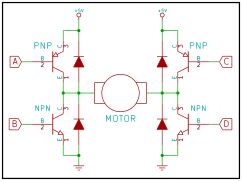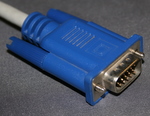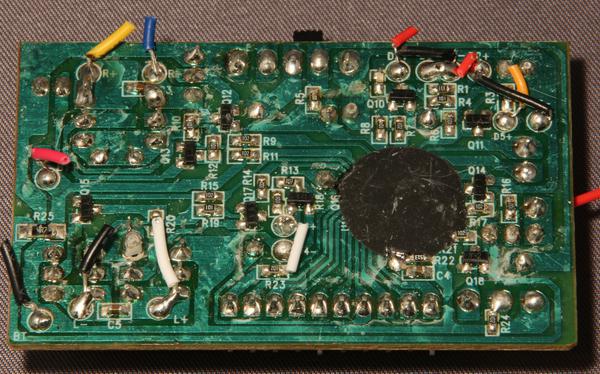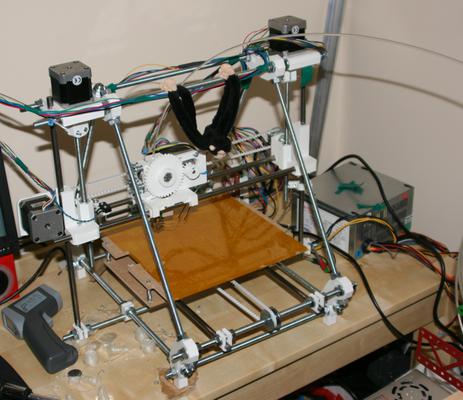Midas Graphic OLED
Last updated: 11 Nov 2020 - 11:31
I recently included a Midas Graphic OLED 128x32 pixel display in a product I'm developing at work. The OLED is available from Farnell for a very reasonable £7.61. It's got a 0.1" pitch header for comms and 4 M2 mounting holes which makes it ideal for DIY/prototype products that don't have custom enclosures to mount a bare LCD glass panel nicely.
The big problem is the documentation which is worse than non-existent. It's confusing, misleading and in places just plain wrong. The datasheet seems to have been assembled by someone copying and pasting bits from the controller datasheet with no understanding of what the product does.
I eventually figured it out and got it working, so here are my notes.
Engineering Glossary
Last updated: 24 Aug 2014 - 22:06
One of my contacts at Element 14 got in touch last week to let me know they've been putting together an Engineering Glossary. There's a good range of terms there with brief definitions. The great thing about a subject specific list like this is that you know you're going to get the thing you're looking for rather than the same acronym in a completely unrelated field. It isn't a wiki, so you can't add or update definitions but there's a feedback form on the page if you want to send in a comment.
Stripboard Circuit Construction
Last updated: 21 May 2014 - 21:59
Before cheap prototype PCB services like OSHPark, Ragworm and iTeadStudio options for building circuits for prototype or hobby projects were much more limited. You could etch your own board, carve a board out of copper clad with an abrasive tool, wire-wrap it all or use stripboard.
Stripboard, sometimes known as Vero-board (after a popular manufacturer) is a kind of circuit board, usually a cheap substrate like SRBP, with long strips of copper about 2mm wide running the length of the board. Holes are typically punched on a 0.1" (2.54mm) grid across the board, making it easy to fit traditional through-hole components.
The basic technique of construction is to use a small drill type tool, known as a spot-face cutter, to cut the long traces to make separate parts of the circuit. Wires are run, perpendicular to the copper tracks to create links in the opposite direction, allowing complex circuits to be built up.
Replacing the BigTrak Electronics
Last updated: 28 Jan 2012 - 17:00
Internally the BigTrak is a fairly typical modern toy, the circuit board in it with an epoxy covered ASIC in the middle looks like the main circuit board in any cheap radio controlled car. The motor driver H-bridges are built out of discreet transistors, but as the motors only draw about 25mA running current the transistors are nothing remarkable. Quite possibly the most expensive part is the 0.1" header that the keypad plugs into.
H-Bridge Tutorial
Last updated: 25 Jan 2012 - 20:21

The H-bridge is a circuit used in electronic control of high current devices, particularly where the device polarity may be reversed, e.g. DC motors. The name comes from the fact that the circuit typically looks like a letter "H".
How not to build a RepRap
Last updated: 24 Dec 2011 - 16:03
Actually I have a working RepRap now so it isn't all bad, but there are plenty (too many?) guides about what to do to make a RepRap, I thought I'd just point out the problems and mistakes I made building mine.
VGA Primer
Last updated: 13 Jul 2011 - 21:51

Video Graphics Array "VGA" is a standard for computer display. It has a lot going for it in the hobby electronics field as it is a pretty simple standard and quite straight forward to implement with sufficient signalling speed, there are also a lot of monitors around to test projects on! Colour is a lot easier to generate on a VGA monitor than on a composite video monitor, but it requires a lot more speed as the frames are more detailed and there are more signals to generate.
Z80 Mark 2: The Great Documentation Project
Last updated: 19 Dec 2010 - 12:33
I recently received an enquiry about how the I/O throttling on the PIC worked to ensure that the PSP was shifting valid data out to the Z80. I had a look back at my code and figured out how I'd done it. However I realised in that conversation that the schematics for the project were vastly out of date and it seemed that I hadn't been keeping as up to date as I thought I was with my local copies. I've spent several evenings in the last week and more or less re-drawn all the schematics from scratch, referencing the old snippets and the code and occasionally resorting to the continuity tester!
The schematics are in a number of fairly self contained PDFs here, I'll push the KiCAD source to git hub in the new year after I've finished my Christmas trips. Each unit of the system is mainly only connected by the Z80 busses (data, control and address) although the interrupt controller and the I/O decode have a lot of ancillary signals in them. Hopefully this is all fairly clear, it inclu
Vintage Computer Festival
Last updated: 19 Jun 2010 - 18:21
The UK's first vintage computer festival was held at Bletchley park over the weekend. It's an excellent venue and there were a huge number of people there. A spectacular array of vintage computer hardware was on display in addition to the contents of the National Museum of Computing and there was an excellent market for retro parts and spares, I picked up a couple of bits for my Spectrum and some manuals for the BBC Master.
Dracblade Build
Last updated: 25 Mar 2010 - 22:04
While spending time on the Propeller forums I got involved in an awesome project to make a Propeller based complete Z80 system emulator. There are a few different boards about that are "standard" platforms for extended memory applications, all called blades of some sort. One I particularly liked because of the elegance of the design was the DracBlade. The PCBs were sold through the forum at a very reasonable price, I put mine together from bits from Farnell.

